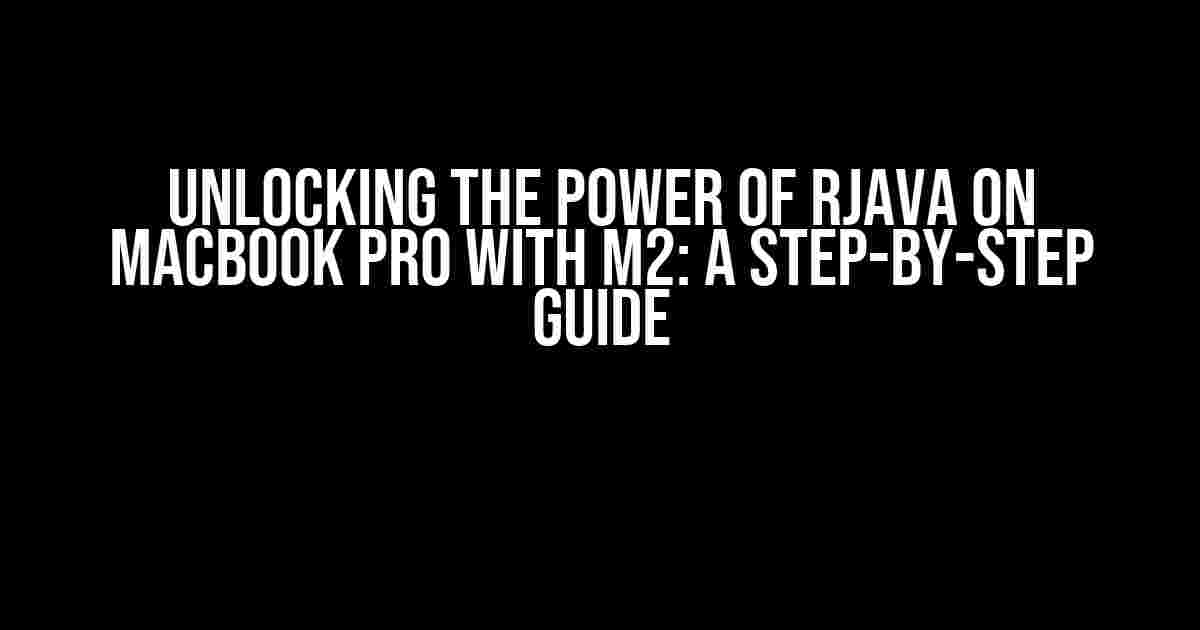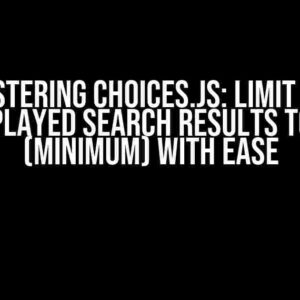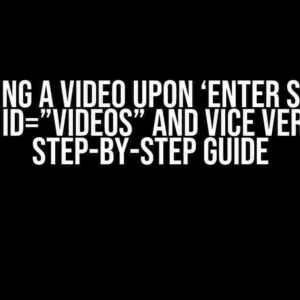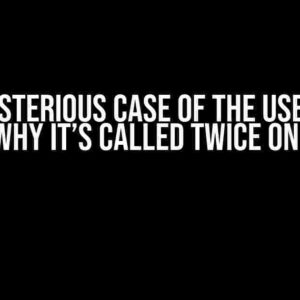Welcome to this comprehensive guide on how to set Java to use RJava on your MacBook Pro with M2! In this article, we’ll take you on a journey to harness the combined might of Java and R, two powerhouses in the world of programming and data analysis.
What is RJava and Why Do You Need It?
RJava is a package that allows you to interface with the R programming language from within Java. This means you can leverage R’s vast array of libraries and statistical functions within your Java applications. With RJava, you can:
- Tap into R’s extensive collection of data analysis and visualization libraries
- Integrate R’s statistical capabilities into your Java projects
- Develop hybrid applications that combine the strengths of both languages
Prerequisites and System Requirements
Before we dive into the setup process, make sure you have the following installed on your MacBook Pro with M2:
- Java Development Kit (JDK) 11 or later
- R programming language (version 4.0 or later)
- RStudio (optional but highly recommended)
If you haven’t installed these components, you can download them from the following sources:
- JDK: Oracle’s official website
- R: The R Project for Statistical Computing
- RStudio: RStudio’s official website
Step 1: Install RJava on Your MacBook Pro with M2
Open your terminal and install RJava using the following command:
install.packages("rJava")This might take a few minutes, depending on your internet connection and system speed. Once the installation is complete, you’ll see a confirmation message indicating that RJava has been successfully installed.
Step 2: Configure Java to Use RJava
Next, you need to configure Java to recognize and utilize RJava. Create a new Java project in your preferred Integrated Development Environment (IDE) or text editor.
In your Java project, create a new file called `java.library.path` with the following contents:
/Library/Frameworks/R.framework/Versions/4.0/Resources/library/rJava/jriThis file tells Java where to find the RJava libraries. Make sure to adjust the version number (4.0) to match the version of R installed on your system.
Step 3: Load RJava in Your Java Application
In your Java code, add the following lines to load RJava:
import java.lang.System;
import org.rosuda.JRI.Rengine;
public class RJavaExample {
public static void main(String[] args) {
System.setProperty("java.library.path", "/Library/Frameworks/R.framework/Versions/4.0/Resources/library/rJava/jri");
Rengine engine = new Rengine(args, false, null);
if (!engine.waitForR()) {
System.out.println("Cannot load R");
return;
}
// Your RJava code goes here
}
}In this example, we’re loading the RJava library and creating an R engine instance. This allows us to interface with R from within our Java application.
Step 4: Verify RJava Installation and Configuration
To verify that RJava is installed and configured correctly, add the following code to your Java application:
String CMD = "print(\"Hello, RJava!\")";
engine.eval(CMD);Run your Java application, and if everything is set up correctly, you should see the output “Hello, RJava!” in your console or terminal.
Troubleshooting Common Issues
If you encounter any issues during the setup process, refer to the following troubleshooting tips:
| Error Message | Solution |
|---|---|
| Cannot load R | Check that R is installed and the `java.library.path` file is correctly configured. |
| RJava not found | Verify that RJava is installed by checking the R package list. |
| Java cannot find RJava library | Check the `java.library.path` file and ensure it points to the correct location of the RJava library. |
Conclusion
Congratulations! You’ve successfully set up Java to use RJava on your MacBook Pro with M2. With this powerful combination, you’re ready to tackle complex data analysis and visualization tasks, integrate R’s statistical capabilities into your Java applications, and unlock new possibilities in your programming journey.
Remember to explore the vast array of R libraries and packages available, and don’t hesitate to reach out to the RJava community for support and resources.
Happy coding, and may the power of RJava be with you!
Here are 5 Questions and Answers about “how to set Java to use RJava on MacBook Pro with M2” in HTML format:
Frequently Asked Question
Get ready to unleash the full potential of RJava on your MacBook Pro with M2!
Q1: Do I need to install Java and RJava separately on my MacBook Pro with M2?
Yes, you need to install both Java and RJava separately on your MacBook Pro with M2. Java is a prerequisite for RJava, so you need to install Java first, and then RJava. You can download Java from the official Oracle website, and RJava from the CRAN repository.
Q2: How do I set the Java path on my MacBook Pro with M2 for RJava?
To set the Java path, you need to add the Java binary path to your system environment variables. You can do this by opening the Terminal app, typing `nano ~/.bash_profile`, and adding the following line: `export JAVA_HOME=/Library/Java/JavaVirtualMachines/jdk-17.jdk/Contents/Home`. Then, restart your Terminal or run `source ~/.bash_profile` to apply the changes.
Q3: What is the correct RJava installation command for my MacBook Pro with M2?
The correct RJava installation command is `R CMD javareconf` followed by `install.packages(“rJava”)`. This will configure RJava to use the Java installation on your MacBook Pro with M2.
Q4: How do I verify that RJava is using the correct Java version on my MacBook Pro with M2?
To verify that RJava is using the correct Java version, you can run `library(rJava); .jinit()` in your R console. This will load the rJava package and initialize the Java Virtual Machine (JVM). You can then check the Java version by running `system(“java -version”)`.
Q5: Can I use RJava with the latest Java version on my MacBook Pro with M2?
Yes, you can use RJava with the latest Java version on your MacBook Pro with M2. However, please note that RJava may not support the very latest Java versions. You can check the RJava documentation for the recommended Java version and ensure that you are using a compatible version.





